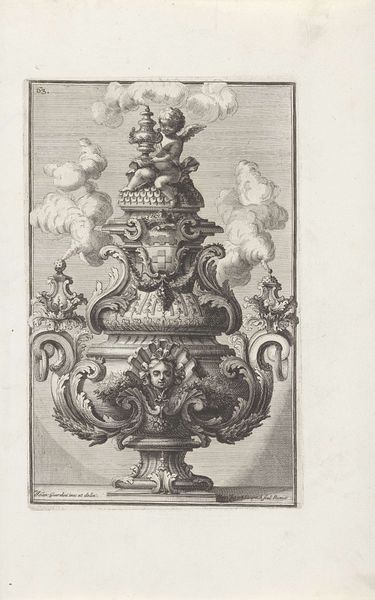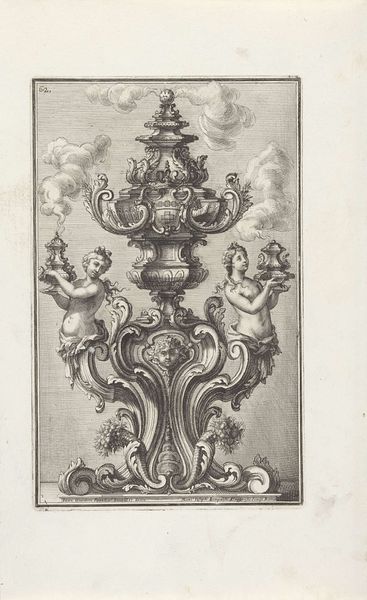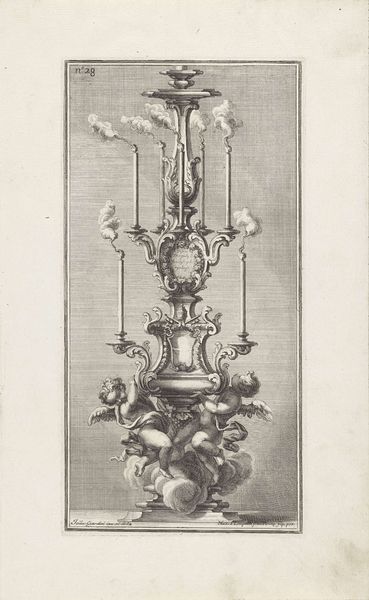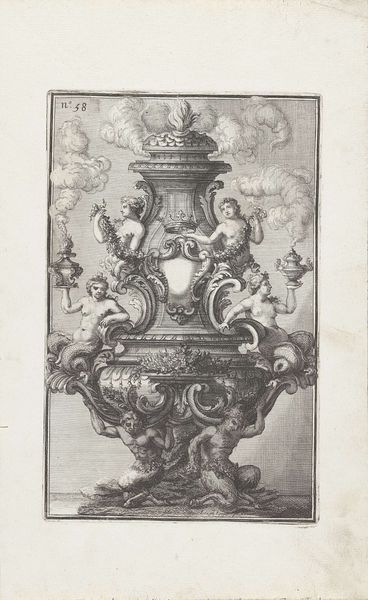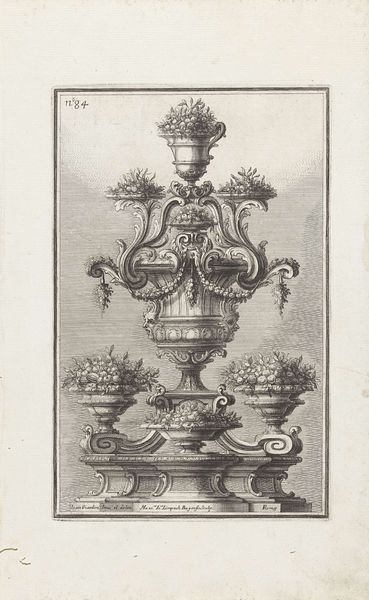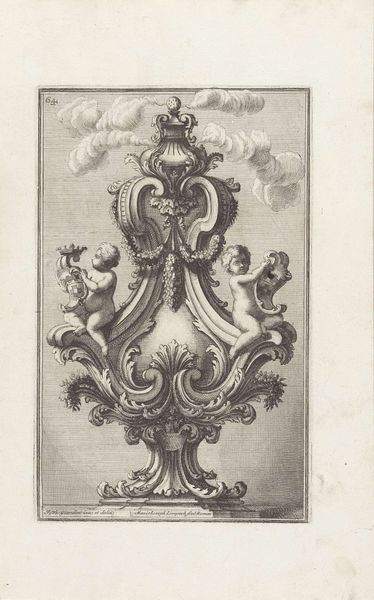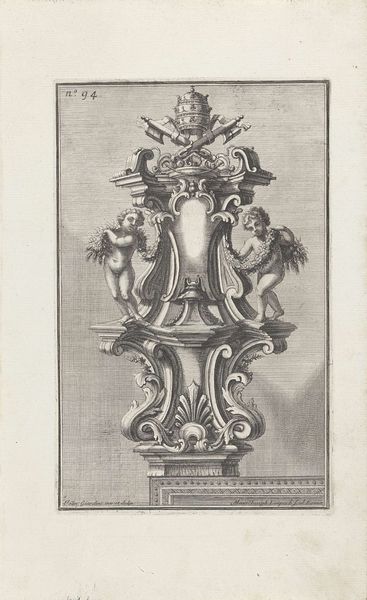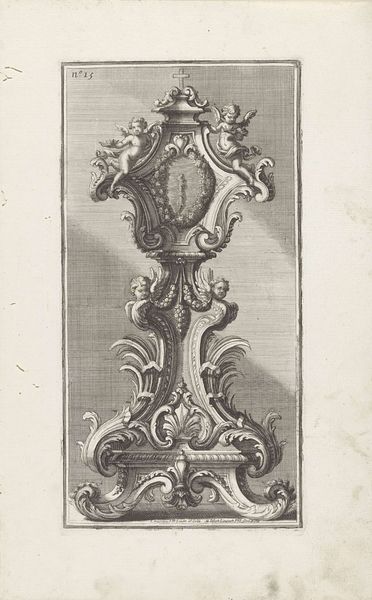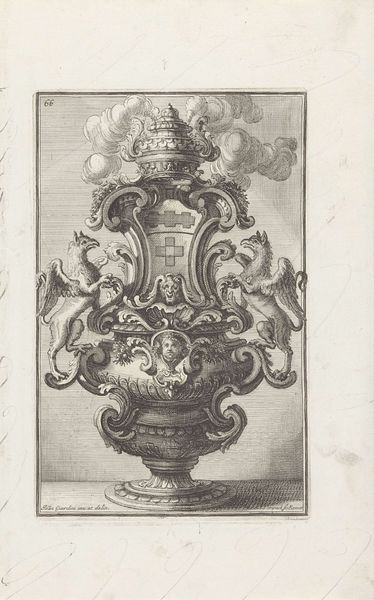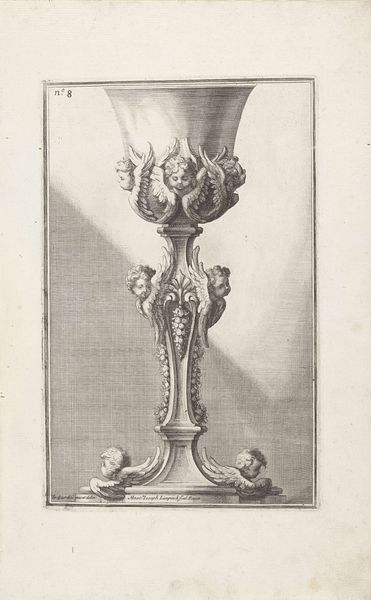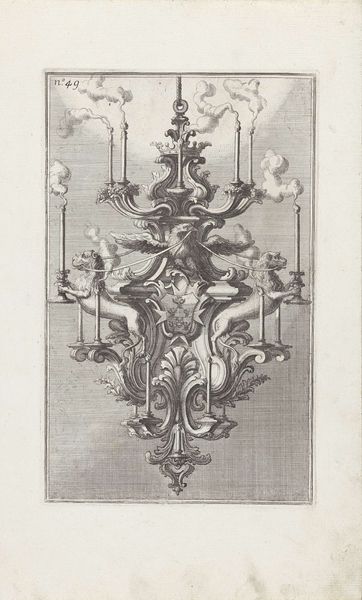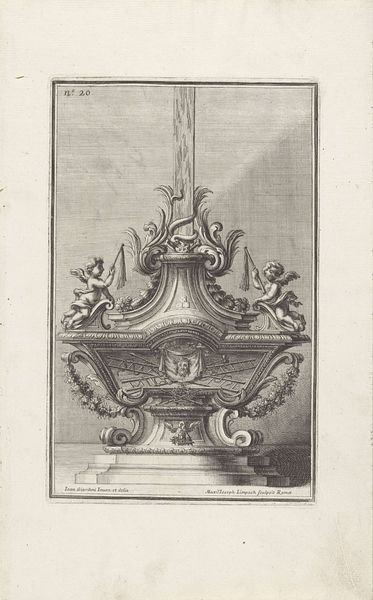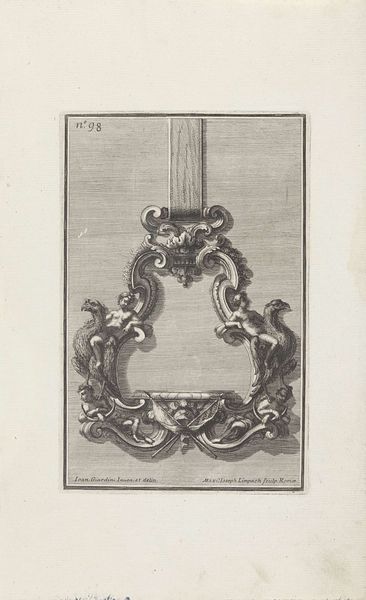
print, engraving
#
pencil drawn
#
baroque
# print
#
pencil sketch
#
old engraving style
#
form
#
pencil drawing
#
geometric
#
line
#
decorative-art
#
graphite
#
engraving
Dimensions: height 271 mm, width 172 mm
Copyright: Rijks Museum: Open Domain
Curator: Immediately, I sense an almost performative opulence in this Wierookbrander—a brazen announcement of wealth and status, perhaps even an assertion of divine favor. Editor: Precisely the cultural landscape Maximilian Joseph Limpach was navigating in 1714. This engraving, currently held in the Rijksmuseum, is of an incense burner. Curator: Incense burner is an interesting point—it's clearly symbolic. I am taken by how the smoke isn't just escaping naturally, it's erupting in stylized puffs, practically mirroring the complex ornamentation of the piece itself. What kind of social functions were pieces such as this meant to fulfill? Editor: That question of function is so interesting, I mean was it purely aesthetic, purely spiritual? Perhaps they are intertwined. What did displaying an object like this communicate, I suppose that the commissioner of this artwork wanted to display that their household was wealthy, knowledgeable of contemporary trends, refined. A way to make visible what otherwise might be abstract. It reminds us of the elaborate rituals and performances associated with baroque courts. How status was crafted, curated, and consumed. Curator: That’s right, smoke, after all, traditionally carries prayers to the heavens. Visually it speaks to transition between the terrestrial and the divine realms. Note that each carefully etched line, the meticulous shading, and the overall symmetry project more than a simple sketch; they create a sophisticated form ready for reproduction and widespread display. Editor: And you are right—this design served a didactic purpose, reaching a broad audience. It probably became popular through dissemination. The visual language—the heavy baroque ornamentation combined with smoke all suggest wealth and luxury and it became standardized by artists of this time to convey status. It is a demonstration of design. Curator: So, it serves as an intriguing record of a particular era’s obsession with spectacle and symbolic communication. Editor: And with carefully examining art like this we come away with greater insight into the value systems operating in past eras, as much as into our present-day engagement with that same visual language.
Comments
No comments
Be the first to comment and join the conversation on the ultimate creative platform.
